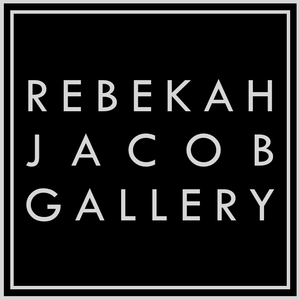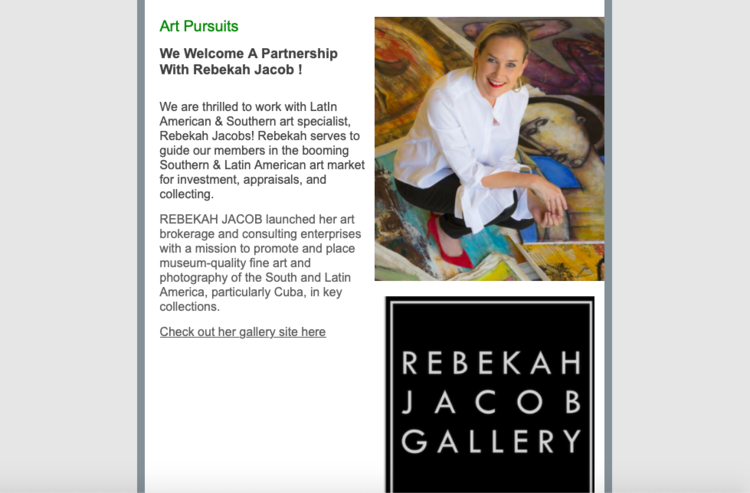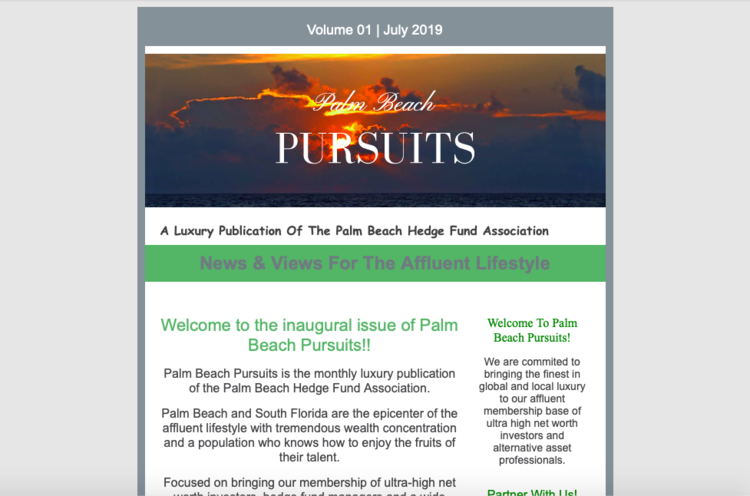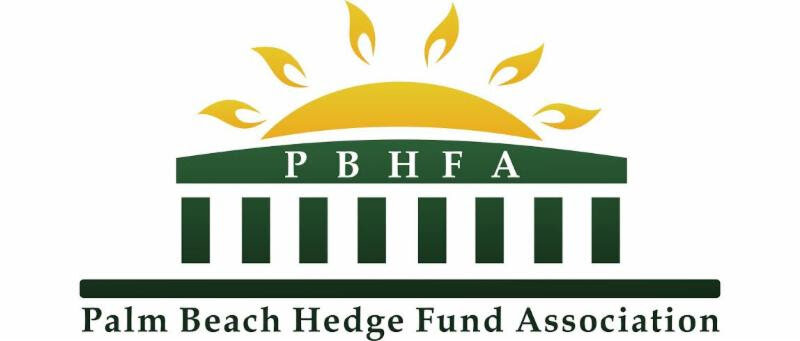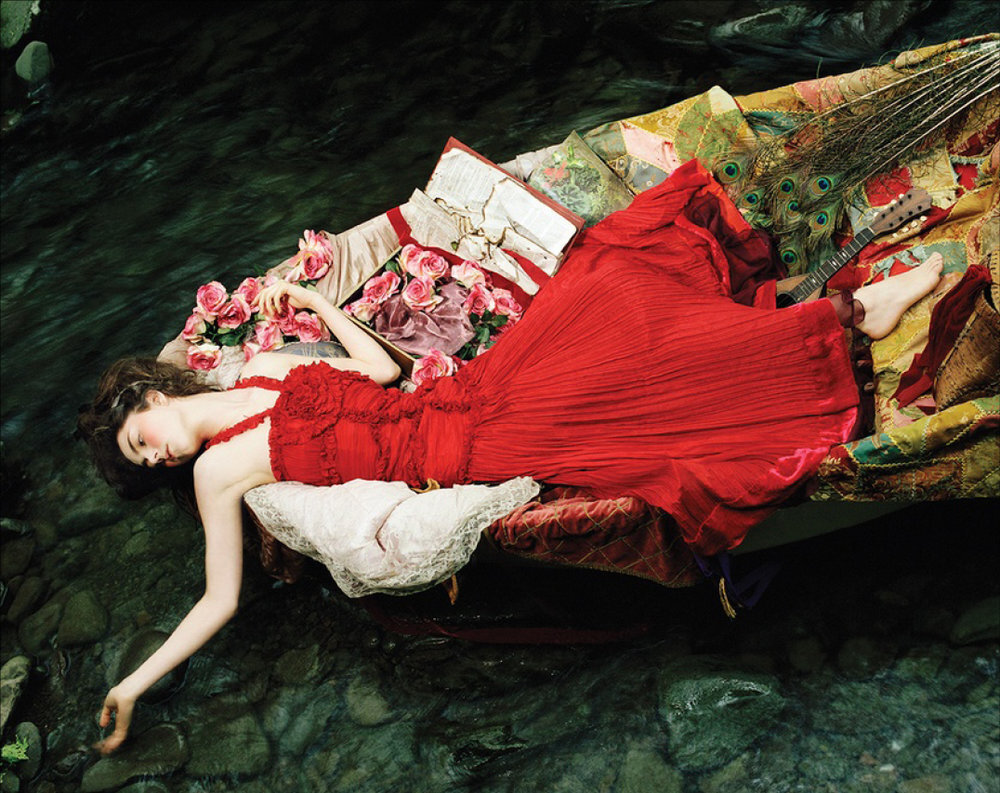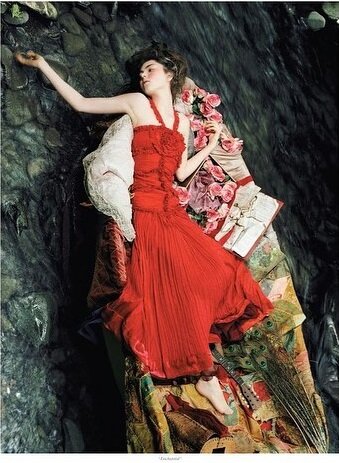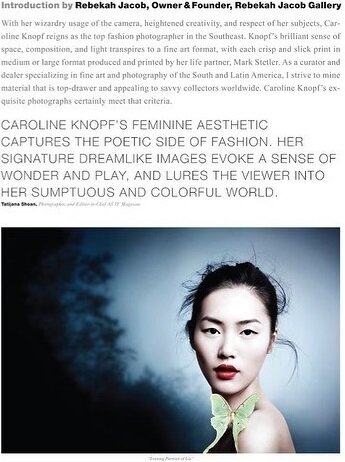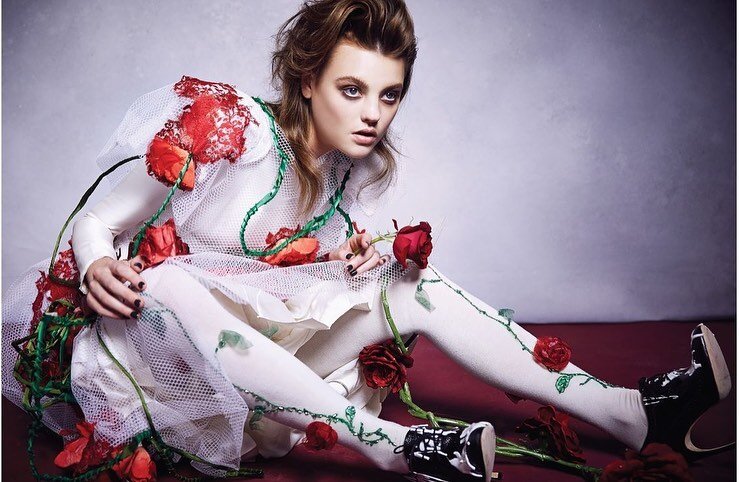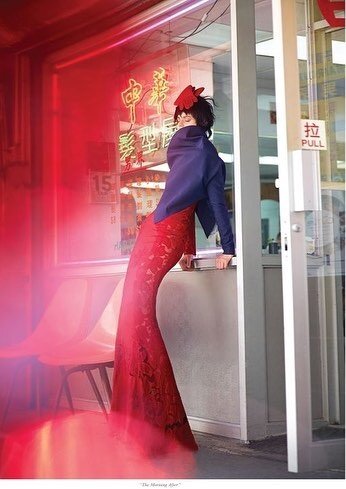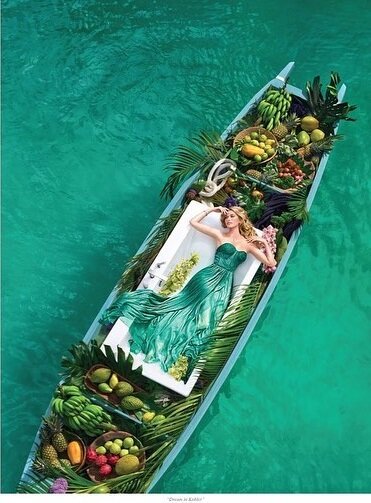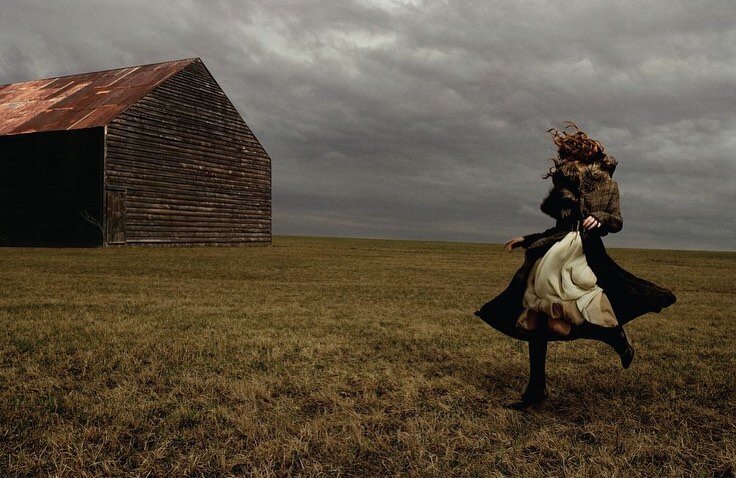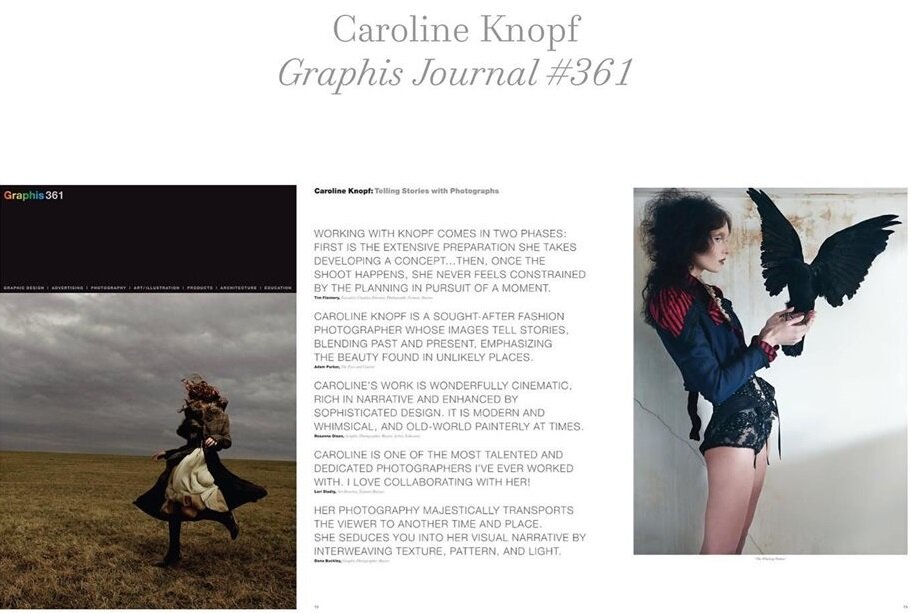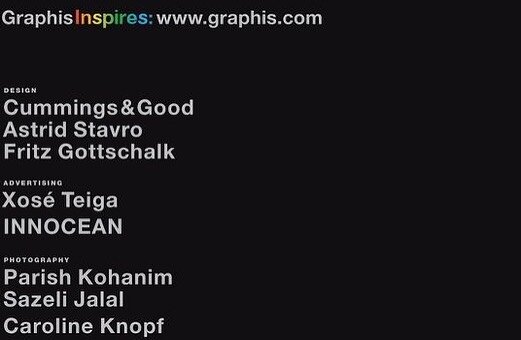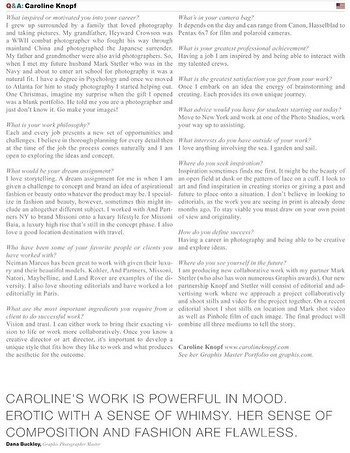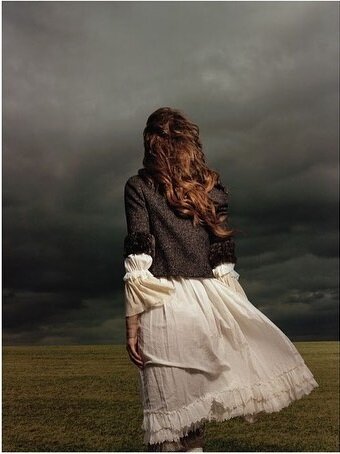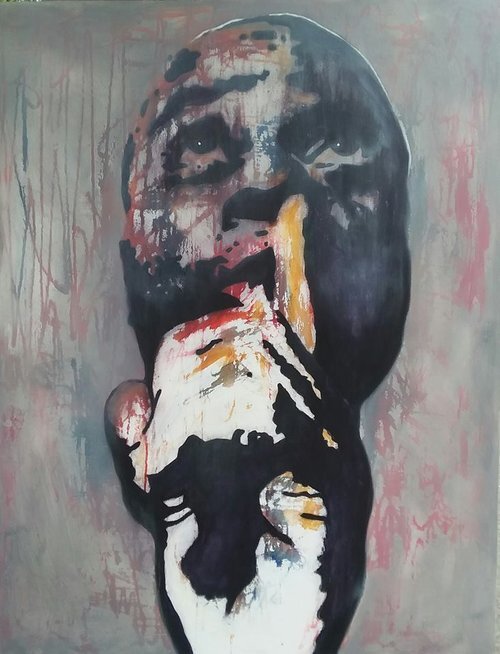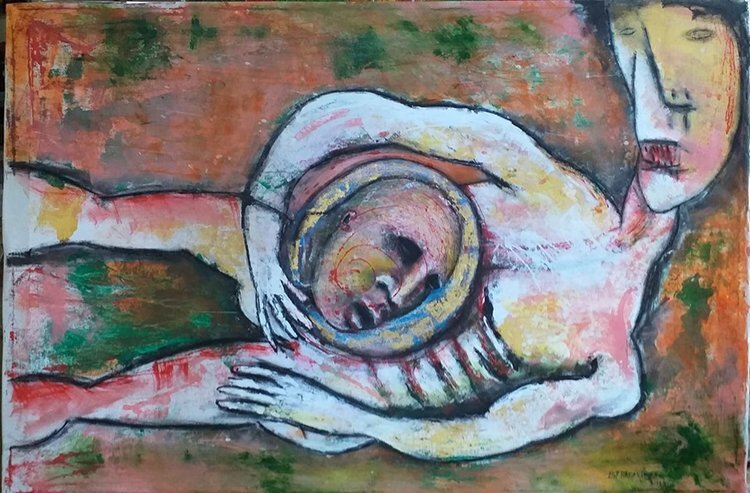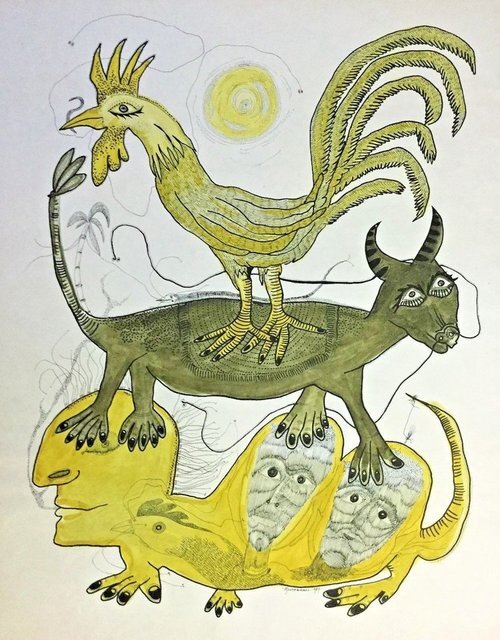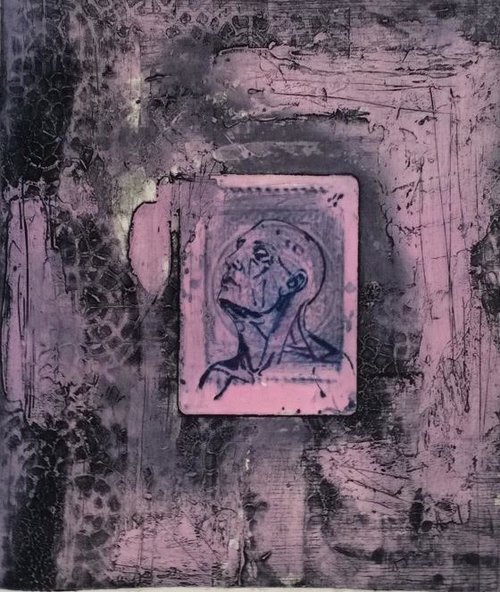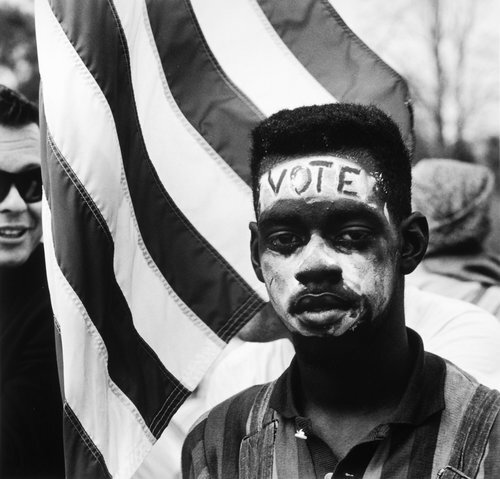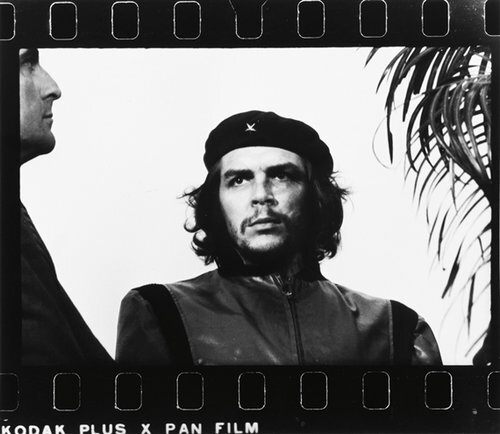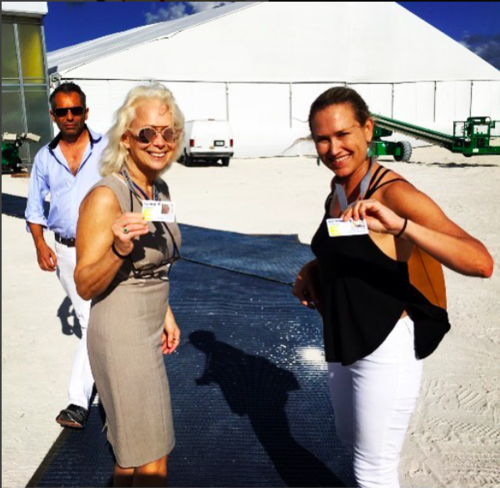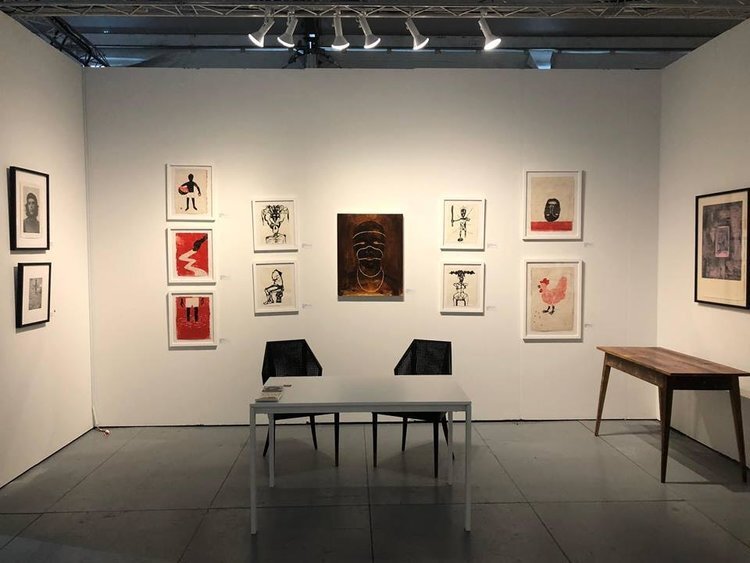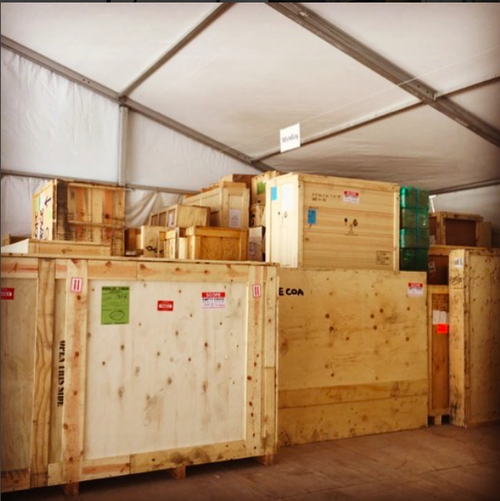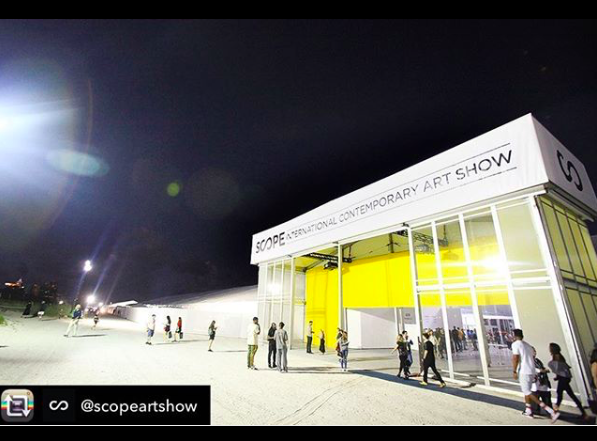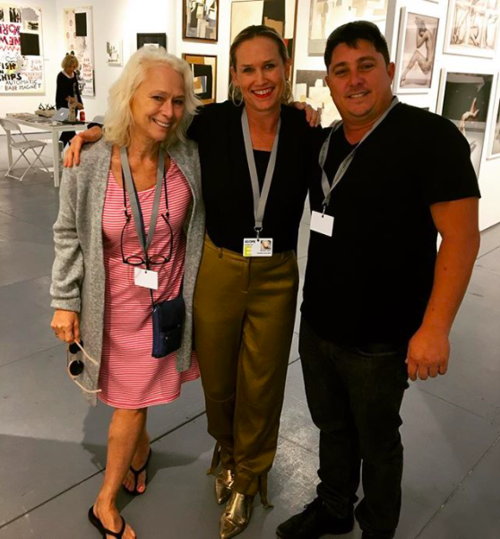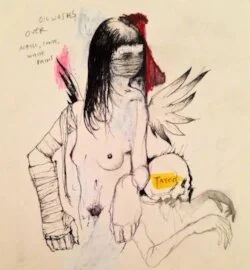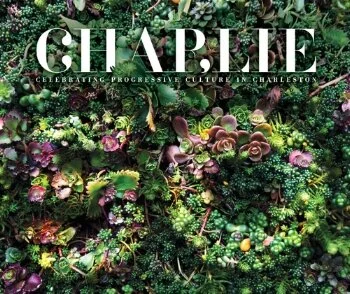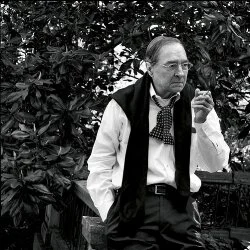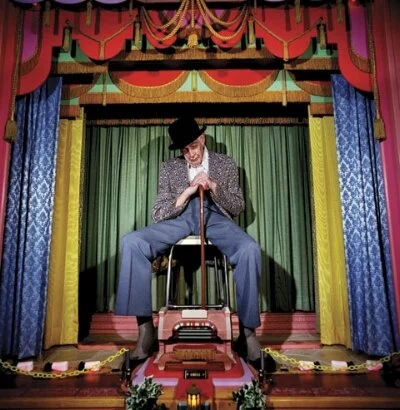Rebekah Jacob Gallery Partners with Palm Beach Hedgefund Association
An honor to partner with the Palm Beach Hedge Fund Association to guide new & seasoned collectors through the turbulent art market. #ArtInvestment #ArtCollecting #ArtAppraisal
On Photographer Caroline Knopf
With her wizardry usage of the camera, heightened creativity, and respect of her subjects, Carolina Knopf reigns as the top fashion photographer in the Southeast. Knopf's brilliant sense of space, composition, and light inspires to a fine art format, which each crisp and slick print in medium or large format produced and printed by her life partner, Mark Stetler. As a curator and dealer specializing in fine art and photography of the South and Latin America, I strive to mine material that is top-drawer and appealing to savvy collectors world-wide. Caroline Knopf's exquisite photographs certainly meet that criterial. - Rebekah Jacob
Rebekah Jacob and her Groundbreaking Gallery
Art has always been an integral part of what it means to be human. Even in the earliest ages of mankind, people sought to express their thoughts, ideas, and imaginations through paintings and drawings. Over the years, as time went by, more and more mediums and techniques were discovered and explored, with countless artists and creative minds conjuring extraordinary images and visual statements in paint, porcelain, stone, and more.
Art has the power to change lives. A single piece of art can inspire a movement, and the greatest pieces can trigger all kinds of emotional responses. A crowd of people gathered around a work of art can all see and feel different things, and art can mean so much to people of different cultures, backgrounds, and walks of life.
The joys of art can be seen and experienced all over the world, with different nations, regions, and cultures each having their own leading artists and ways of expressing themselves. Some of the most moving and thought-provoking art can be found from the South and all-around Latin America, and one of the leading experts in these fields of art is undoubtedly Rebekah Jacob.
Rebekah Jacob of the Rebekah Jacob Gallery on an Art Hunt throughout Havana de Cuba.
Photo credit : J. Kevin Foltz
Rebekah Jacob Gallery - Fine Art and Photography of the South and Latin America
Discovering, curating, promoting, and placing incredible artworks and photographs from the Southern United States and around Latin America in leading collections and prime locations around the world is the aim of Rebekah Jacob through her Rebekah Jacob Gallery. A passionate expert in the diverse art and photography seen in the South and Latin America, Jacob is one of the most trusted names in the field. Here's all you need to know about Rebekah Jacob and her ground-breaking gallery:
- A Passionate Founder - With a B.A. in English, an M.A. in Art History, and a Certificate in Appraisal Studies in Fine and Decorative Arts, as well as art history teaching experience and a lifelong love and passion for art, particularly from the South and Latin America, Rebekah Jacob is a true master of her craft. A fully certified member of the International Society of Appraisers, Jacob formed her own gallery with a view to sourcing incredible artworks from her chosen locations and bringing these pieces to art lovers and collectors around the globe.
- Striving For Greatness - Jacob has used her extensive knowledge and experience throughout the art world to launch a gallery that really is making a difference. She has brokered, curated, and consulted on countless pieces of fine art and photography for many different collections and museums, working with both private collectors and cultural locations like big city galleries to find the perfect pieces for every party. Constantly striving for improvement, Jacob continues to curate, exhibit, appraise, and broker more and more artworks from all around the South and locations like Cuba.
- Art For A Cause - A big reason why Rebekah Jacob focused so strongly on art from the South and Latin America is the immense social and political influence many of these pieces had on their repsective regions. Many of the photographs and artworks she has curated and brokered from the South, for example, explored the Civil Rights Movement. She has also taken part in talks, studies, projects, and seminars regarding the importance of art and photography in civic and political movements through history.
- Expert Appraisals - One of the key services Rebekah Jacob is able to provide is art appraisals. With her unparalleled expertise in art and photography from the South and Latin America, Jacob is able to provide accurate estimations of a piece’s value. All appraisal services will include fair market value estimations, as well as descriptions of the object, details on its condition, history of the piece, market data, auction histories relating to the piece or the artist in question, and more. Commonly used for both insurance and sales purposes, appraisals can also be essential for charitable donations, tax returns, and more.
- Art Sales - Naturally, a large part of the functioning of the Rebekah Jacob Gallery is also driven around sales of fine art pieces and photographs. The gallery can always boast of an outstanding collection, with incredible pieces from the past and present, including various contemporary paintings from artists like Juan Henriquez, William Halsey, Luis Alberto Perez Copperi, Bill Dunlap, and J. Kevin Foltz, as well as photography from Southern and Latin American pioneers like Raul Corrales, Lucien Clerque, Agustin Victor Casasola, Jesse A. Fernandez, William Eggleston, Walker Evans, and Lewis Hine.
For art appraisals, sales, and purchases of fine art and photography from the key markets of the Southern United States and Latin America, Rebekah Jacob Gallery is the place to be. A true expert in these areas of art, Rebekah Jacob is one of the leading names operating today. Art can be purchased and services can be ordered online or in person, and the gallery can also be contacted via phone at 843 754 0003. website
Rebekah Jacob Redefining The Art Gallery Model For The Digital Age
September 6, 2018
Rebekah Jacob Embracing Digital Front Door with Brick and Mortar Supporting Role
CONTACT: SULLIVAN BRANDING // RALPH BERRY
CHARLESTON, South Carolina – As the art world changes and evolves, Rebekah Jacob strategizes and implements new ways and platforms to sell art. To innovate and grow, Jacob embraces technology and mobilizes via art hunts to Havana de Cuba and Mexico City de Mexico and art fairs across the US.
A veteran in the industry (with over twenty years of experience) and a certified art appraiser, Jacob launched her eponymous enterprise, the Rebekah Jacob Gallery, to specialize in fine art and photography of the South and Latin America, particularly Cuba. While physical exhibitions still play a role, Jacob has flipped the model so that physical space is the third element of success. Taking art to the people rather than the people coming to the art has taken precedent.
According to Jacob, the successful art enterprise of today has three parts.
1) Galleries must offer a satisfying and engaging online experience. It begins with an easily accessible website and social presence that allows the customer and collector to see and experience the art. Beyond that, retailers in the Art World are leveraging technology, such as artificial intelligence and augmented reality, to enhance operational visibility and personalize their customer service, a new necessity in a fast-changing and demanding consumer market.
2) Curating and installing exhibitions at top art fairs and shows – taking and exhibition on the road – is the path to opening new markets and discovering new collectors.
3) A physical space serving as an operational headquarters and viewing room. The modern and physical space can be greatly downsized from the gallery of the past. Still, a physical space does say something about stability and also provides a location for receiving, prepping and shipping, as well as receiving clients.
Today, many art dealers agree that vintage tactics like gallery exhibitions accompanied by wine and cheese gatherings are no longer the primary client engagement and revenue creation tools. Nationwide, gallery visitors have slumped as tech engagers and art fair buyers have tripled. And tying it all together must be a professional owner who understands her or his clients’ needs and aspirations, while pushing them with exposure to new ideas and new artists that can inspire.
“No doubt, art fairs have become the primary site of sales and networking. Often in a fair setting, a gallery will be able to sell most of the booth, sometimes in the first few hours as happened to us at Art Basel,” says Jacob. “And tech is our main—and most cost effective—advertising tool. A successful gallery must expand its potential beyond visitors to the physical gallery city and reach buyers world-wide. A physical space no longer lures the demographic and buyer on a consistent basis.”
Charleston will remain home to operations for REBEKAH JACOB (www.rebekahjacob.com), as the enterprise expands into new hot pockets and cities across US and beyond.
How to Travel Like An Insider: Charleston, South Carolina
May 1, 2015 | Tracy Minkin
Independent Bookstore: Blue Bicycle Books. Don’t let the 10 feet of storefront fool you; 50,000 new, used, and rare books. The best collection on and about Charleston in the city. 420 King Street, bluebicyclebooks.com
Coffeehouse: Black Tap Coffee. The roast their own on nearby James Island; the coffeehouse is sunlit and has a stand-up bar for espresso fiends. 70 ½ Beaufrain Street, www.blacktapcoffee.com
Great Gallery: Rebekah Jacob Gallery. Impeccably curated contemporary fine art and photography of the American South. Simultaneously sophisticated and accessible. 54 Broad Street, 2nd level, www.rebekahjacobgallery.com
Cocktail: The Red Wedding, Edmund’s Oast. One of the hippest bars in town reinvents a classic Southern pairing of bourbon and sweet tea. 1081 Morrison Drive, edmundsoast.com
Trending Now:
the masters of Cuban revolutionary propaganda photography
Teresa Bruce | FEBRUARY 26, 2015
Imagine being an art history graduate student invited into the personal studio of famed Cuban photographer “Chinolope” Lopez. One of the guys who shot the Cuban revolution for Life and Time. Not quite as famous as Alberto Korda or Raul Corrales but just as amazing. Reportedly got his nickname from Che himself. You fall in love with one of his prints. He goes to show you the negatives. But they’re a gooey mess, stuck together and irreparably damaged. You want to cry for what is lost to future generations.
Gallerist Rebekah Jacob, on the left, showing me the work of Cuban masters
That’s exactly how Rebekah Jacob remembers feeling when she was on one of her first trips to Havana. Chinolope shrugged it off but she never could. The experience represents the twin hopes and frustrations of dealing with revolutionary Cuban photography, the kind she now sells at her gallery in Charleston, South Carolina.
Sixty years after they were made, these images are still gasp-inducing. There’s the infamous Korda shot of El Che before it was cropped into the ubiquitous image emblazoned on coffee mugs and T-shirts around the globe.
ALBERTO KORDA; Guerrillero Herico, 1960; 20 x 16 inches; Gelatin Silver print
My favorite though, is the epic image of victorious riders on horseback captured by the late Raul Corrales.
“Cuban photography was hot in the 90s,” Jacobs says. “In part because the revolutionary photographers were still alive and had access to American markets. Galleries like the one in Mississippi I worked for at the time would
come to the island in the Spring, bringing the photographers chemicals and paper they couldn’t get on the island, and then come back in the Fall to pick up the work. ”
The other part was the tireless lobbying of Sandra Levison who, in 1991, won a pioneering lawsuit against the U.S. Treasury Department that made it legal to import original Cuban art. (Read more about her in this article.)
While the second generation of photographers who apprenticed under the masters (like Korda’s printer Jose Figueroa) were moving on, doing conceptual work and documenting the lives of ordinary Cubans, American collectors were still gobbling up vintage prints of El Che and Castro.
Then Cuba stopped accepting payments in U.S. dollars and the Bush administration clamped down even harder on travel restrictions. Art collectors today could theoretically walk into darkrooms like Lopez’s and take as many prints as they like back to the United States — if only they could spend dollars or pay with credit cards in Cuba.
While the second generation of photographers who apprenticed under the masters (like Korda’s printer Jose Figueroa) were moving on, doing conceptual work and documenting the lives of ordinary Cubans, American collectors were still gobbling up vintage prints of El Che and Castro.
ALBERTO KORDA; Guerrillero Herico, 1960; 20 x 16 inches; Gelatin Silver print
Then Cuba stopped accepting payments in U.S. dollars and the Bush administration clamped down even harder on travel restrictions. Art collectors today could theoretically walk into darkrooms like Lopez’s and take as many prints as they like back to the United States — if only they could spend dollars or pay with credit cards in Cuba.
“Access dried up, right at the time the old masters were dying or losing their negatives to the incredible humidity,” Jacobs says. Because of Cuba’s uniquely isolated situation, they didn’t have access to photography’s digital revolution – losing out on technology that might have saved the likes of Lopez’s gooey negatives, or at least help him market those that did survive.
“Cuba just didn’t have the bandwidth and the photographers got left behind.” By 2004, Jacobs wasn’t selling nearly as much work by Cuban photographers. “The Cuban photography market stalled and the inventory just contracted.”
The good news is that change is coming. On February 27th, 2015, the second round of talks to normalize relations between Cuba and the United States gets underway in Washington and that, Jacobs says, is renewing interest in the market for Cuban revolutionary photographers. The inventory of vintage prints is still low but ever since President Obama announced the move to end détente in December, collectors have perked up. Jacobs predicts prices to skyrocket in the next six months, regardless of how long it takes for travel to return to pre-embargo levels.
So what makes the work of Lopez, Corrales and Korda so collectable years after its propaganda value faded? It goes beyond the images themselves, a by-product of the unique access they had to Che and Castro during the revolution. “These were great craftsmen. They improvised everything and had to print in their bathroom sinks but each one had their own unique style. The tones were all very different. You can look at a print and know who made it.”
Jacobs isn’t alone in her appreciation for and confidence in the market for Cuban photography. Here’s an excerpt from a recent piece in the Seattle Times.
That pipeline of art lovers is about to grow, predicts Alberto Magnan, whose Manhattan gallery Magnan Metz specializes in Cuban art. Magnan, who is currently in Havana, received 25 calls from collectors on Dec. 17, after Obama announced that the two countries would move to restore diplomatic ties. He is now booked through March with Cuba visits.
“It’s absolutely crazy,” he said.
Even though Americans can visit Cuba under rules dating to 2009 that allow “purposeful travel” intended to foment contact with Cubans, many shied away, Magnan said.
“It’s a hassle,” he said, referring to the need to get a license from the U.S. government and pay for works without using a U.S. credit card. Now, however, “they’re saying, ‘I want to go before everyone else does’.”
Raul Corrales; Caballeria, 1960; 16 x 20 in; Gelatin silver print
“Cuba just didn’t have the bandwidth and the photographers got left behind.” By 2004, Jacobs wasn’t selling nearly as much work by Cuban photographers. “The Cuban photography market stalled and the inventory just contracted.”
The good news is that change is coming. On February 27th, 2015, the second round of talks to normalize relations between Cuba and the United States gets underway in Washington and that, Jacobs says, is renewing interest in the market for Cuban revolutionary photographers. The inventory of vintage prints is still low but ever since President Obama announced the move to end détente in December, collectors have perked up. Jacobs predicts prices to skyrocket in the next six months, regardless of how long it takes for travel to return to pre-embargo levels.
So what makes the work of Lopez, Corrales and Korda so collectable years after its propaganda value faded? It goes beyond the images themselves, a by-product of the unique access they had to Che and Castro during the revolution. “These were great craftsmen. They improvised everything and had to print in their bathroom sinks but each one had their own unique style. The tones were all very different. You can look at a print and know who made it.”
Jacobs isn’t alone in her appreciation for and confidence in the market for Cuban photography. Here’s an excerpt from a recent piece in the Seattle Times.
That pipeline of art lovers is about to grow, predicts Alberto Magnan, whose Manhattan gallery Magnan Metz specializes in Cuban art. Magnan, who is currently in Havana, received 25 calls from collectors on Dec. 17, after Obama announced that the two countries would move to restore diplomatic ties. He is now booked through March with Cuba visits.
“It’s absolutely crazy,” he said.
Even though Americans can visit Cuba under rules dating to 2009 that allow “purposeful travel” intended to foment contact with Cubans, many shied away, Magnan said.
“It’s a hassle,” he said, referring to the need to get a license from the U.S. government and pay for works without using a U.S. credit card. Now, however, “they’re saying, ‘I want to go before everyone else does’.”
READ THE ARTICLE
2014/2015 upcoming issue Charleston Style & Design
Inside Creole World
MAY 21, 2014 | Elizabeth Hutchison
In 1974, at age twenty, photographer Richard Sexton packed up his old Datsun station wagon and set out for South America. It started as a standard road trip but the six months he spent exploring the region—from Mexico to Bolivia and back—would influence his work for the next forty years.
Captivated by the Latin American people and the Creole culture, Sexton settled in New Orleans some seventeen years later, setting up house in an 1840s Creole cottage in thecity’s Fauborg Marigny neighborhood. In the years since, he has produced twelve photography books including Terra Incognita: Photographs of Americas Third Coast and Vestiges of Grandeur: The Plantations of Louisiana’s River Road. He never lost his early fascination with all things Creole, stamping his passport everywhere from Ecuador and Panama to Cuba and Haiti, Creole traditions permeate nearly every layer of society—food, drink, music, literature, even religion.
Richard Sexton; 'Dance Floor with Vultures', Club Cartouga, Cuba; from CREOLE WORLD series; archival pigment print.
CHARLESTON’S TOP-10
CONTEMPORARY ART GALLERIES
APRIL 2014 | Claire Baker
Kevin Taylor; 'Tazer'; mixed media on paper
Sexton found his lens drawn again and again to the ornate architecture found in these places, much of it existing in various stages of decay brought about by the combined effectsof Mother Nature and a reversal of colonial fortunes. His newest tome, Creole World—which was published by the Historic New Orleans Collection nearly two-hundred haunting photographs–spanning four decades of work—that capture these once bright colorful facades, louvered shutters, tall ceilings, sagging wrought-iron balconies with peeling paint, deep porches, and overgrown interior courtyards. It’s a visual investigation of the complicated culture—a mash-up of French, Spanish, and West African influences—and draws connections between Sexton’s adopted home of New Orleans and its sister cities in Latin America and the Caribbean that he first encountered on that long ago road trip.
“This well-designed and meticulously curated gallery is representative of the true deep American South. The driving philosophy at Rebekah Jacob Gallery is to source establishedand widely exhibited artists in exhibitions that travel across media whilst also staying true to their Southern roots. Photography and canvas works are exhibited featuring civil rights documentary footage and photography, as well as installations with trompe-l’œil effects and an outdoor presence. Past exhibitions have also taken Cuban and Latin Caribbean influences into account. The bulk of the associated artists are photographers, such as William Eggleston, but contemporary painters also display their wares on the walls, including Kevin Taylor, with his eerie depictions of personified animals.”
SURREAL REALISM
Kevin Taylor's newest exhibit brings back the animals
November 2013 | Melissa Tunstall
Kevin Taylor; 'Chemistry Hypnosis'; oil on canvas.
On a wall in the Rebekah Jacob Gallery appears the phrase, "We are nature, and nature is indistinguishable from us on so many levels," an idea that embodies painter Kevin Taylor's new exhibit Inner Wilderness, which features the animals that Taylor has become known for. In this latest exhibit, his animal paintings have taken on a new dimension.
Rebekah Jacob believes the realism comes from Taylor's illustration background. Taylor attended the Savannah College of Art and Design majoring in illustration and took his first painting class his senior year. He draws first, then paints, and he plays with dimensions and brush strokes.
In "Chemistry Hypnosis" you can also see the pencil outlines of another creature that Taylor decided not to paint. Jacob says that even though he'd decided against painting the animal, he felt it had become part of the work. "If you turn over the canvases, you'll see a lot of pencil marks on the back of his paintings,"she adds.
Inner Wilderness encompasses numerous contradictions. The show uses neutral colors but does not appear muted.
There is a lightness in the paintings, but an overwhelming sense of heaviness in the subject matter. And the majority of the subjects are animals yet are personified. It's these paradoxes that make the work so interesting.
As heavy as the subject matter is, it's not just for adults. "The children that have come in have been great. They go from painting to painting naming the animals and making up stories about them," Jacob says. It's another example of the show's duality. There's such gravity to the paintings, but there's also a sense of whimsy, which adds an interesting dynamic to the exhibit.
Rebekah Jacob’s passion for Fine Art keeps her gallery at the top of Charleston's art scene
July 2013 | Jason A. Zwiker
When her car broke down in Mississippi, she bought art.
It was what she was there to do.
This is what you must understand about Rebekah Jacob. She does not stop. Throw an obstacle in her path and she’ll simply size it up, find a way around, and keep going. So while the mechanics did their work, she did her own.
And, truth be told, when your passion is for the photography that tells the story of the American South, the Mississippi Delta isn’t such a bad place to find yourself stranded. To picture the scene, close your eyes and let your imagination soften the lines between long ago and now just a little, like a photograph intentionally left slightly out of focus. That fertile crescent of black alluvial soil remains the same. It’s just the names and the faces of the people that change over time.
Mississippi is home to Jacob. She grew up in Clarksdale, surrounded by a wealth of musical heritage and agricultural tradition. She went to Ole Miss for her education, earning a B.A. in English and M.A. in Art History. That’s where she fell in love with the work of author and photographer Eudora Welty. The sincerity and strength of those images, scenes from rural Mississippi, left an indelible impression on her.
“It’s a window for people to see what Mississippi is and how the people live,” she says. “The photography really is timeless.”
Welty’s work, along with the Depression-era photography of Walker Evans and the soul-stirring portraiture of Doris Ulmann, became the inspiration for a lifelong passion. She sought out the work of Civil Rights era and Cuban revolutionary photojournalists. The power of an image to capture the imagination and inspire change is something she understands well.
Rebekah Jacob
“Photography is immediate,” she says. “The photographer has to get a little bit lucky. These photographers were traveling, documenting a story in a very truthful, matter-of-fact way. The camera is very honest.”
“I want to be the Diane Sawyer of the arts,” she adds with a laugh. “I need to dig deep and see the authenticity behind the work for myself. If I can’t, it won’t be shown in the gallery.”
This work ethic is a large part of what has kept Rebekah Jacob Gallery consistently at the top of Charleston’s visual art scene. She’s always on the move. When she is not in town hosting an exclusive art event at RJG, she’s very likely acquiring, appraising, or lecturing in key cities such as New York City, Houston, Palm Beach, or Washington, DC. That mobility is essential to her business strategy.
“She’s not just sitting here in Charleston with a catcher’s mitt waiting for the artists to show up,” says business strategist Baron Hanson. “She’s jetting where she needs to be to find the artists, to meet the collectors, and to learn what is happening behind the scenes.”
That tenacity has taken her to some amazing places. She’s travelled to Cuba to see firsthand the work spaces of the revolutionary photographers she admires. Many of them were developing out of their kitchen sinks and, just the same, creating prints of phenomenal quality.
Defining Jacob is a daunting task. Imagine a top-tier curator, fine art appraiser, and Indiana Jones all rolled up into one person. Then take into account that she is a dedicated runner who often plans exhibits down to the finest detail while the miles slip by under her feet. On top of all that, add in the fact that she’s still amazingly young for someone so accomplished.
“That’s the exciting part: to have someone as young as her who can actually acquire such rare and high-valued collections,” says Hanson. “She’s come to the point, within eight years, where she can show a work like ‘Red Ceiling’ by William Eggleston.”
To put that into perspective, consider this: in the spring of 2013, copies of ‘Red Ceiling’ were held by the Museum of Modern Art, the J. Paul Getty Museum (not currently on view), and Rebekah Jacob Gallery, in Charleston. That’s not a long list.
Eggleston’s work was part of RJG’s 2013 spring show “Somewhere in the South”, a powerful exhibit that featured some of the most notable Southern photographers, including color photography pioneers Eggleston and William Christenberry.
Every artist I represent here has some connection to the South,” she says. “Another point is that they are all seasoned, professional artists.”
This is perfectly in line with her vision for art in Charleston. She wants nothing less than for the city to be recognized as a national hub for fine arts and photography.
RJG features diverse works including paintings and photography, all at the highest level of connoisseurship. Each artist represented is world-caliber, having been exhibited across the globe, and has works in museum and corporate collections.
In addition to her work in the gallery, she also offers appraisal services. The formal appraisal process is necessary for many purposes, including resale, estate planning, and insurance, and Jacob has the experience and credentials to handle this with the utmost professionalism. She holds a certificate in Appraisal Studies in Fine and Decorative Arts from New York University and is a Certified Member of the Appraisers Association of America.
Keeping all of this in balance requires constant effort. Traveling around the country isn’t just a perk of the job, it’s absolutely essential. “There’s a lot of movement in different markets right now,” explains Hanson. “Things that were once considered unattainable are starting to become available.”
When that once-in-a-lifetime grab surfaces, either you’re right there, ready to acquire it, or you’re not. Rebekah Jacob makes it a practice to be there.
The ART BOOM
Charleston's Fine Art Scene Continues to Grow
June 2013 | Leah Rhyne
The Rebekah Jacob Gallery's recent acquisition of an extremely rare print by photographer William Eggleston is a sign of the times for the Lowcountry's thriving fine art scene.
In early June at the Rebekah Jacob Gallery on Upper King Street, the curtains opened on a new show. Called Somewhere in the South, the show is a celebration of Southern photography and features works by such notable artists as William Eggleston, Richard Sexton, and William Christenberry. The highlight of the show is an exceptional Eggleston piece called "The Red Ceiling," a dye transfer print of a photograph so rarely printed that it also hangs in the Metropolitan Museum of Art in Manhattan. And now it hangs here, in Charleston. Clearly, this is not your typical Charleston art show. But then, what's "typical" of art in Charleston is rapidly changing.
As the national economy improves, the art world trends upward. People with the disposable income to collect fine art are spending it again, investing in art instead of socking everything away in a retirement fund. Byrd also points out that galleries often shift, merging and moving, expanding and contracting as part of their normal growth process. That's part of the nuanced business of running an art gallery — the dealers have to balance their love of art with the ability to take risks and make decisions that make business sense. Rebekah Jacob of Rebekah Jacob Gallery agrees. "Art dealing is truly an art form in itself," she says. "It is a long process [that requires] experience, credibility, smart business, and ultimately the invitation to participate."
William Eggleston, 'Sonic Drive-Thru, Mississippi'
The benefits of risk-taking are nowhere more apparent than within the walls of the Rebekah Jacob Gallery. It's seen a significant revenue increase in the past year, due in part to the well-timed hiring of an expert in outside growth strategies. Gallery owner Rebekah Jacob brought a consultant on board to help take her gallery not just to the next level, but several levels beyond that.
Yet much of her gallery's success can be attributed to Jacob herself, who has been known to work from 8 a.m. straight through until midnight. And as the gallery's focus has shifted to professional, well-known artists and big-ticket works, so has Jacob's focus shifted to ensure that these high-end items are brought into Charleston, and, specifically, to the Rebekah Jacob Gallery. She's been on business trips to Mississippi, New Orleans, New York City, and Washington D.C. this year alone. She's also installed new security within the gallery to ensure the pieces will remain safe while temporarily housed under her roof.
The acquisition of Eggleston's "The Red Ceiling" is a massive win. Bidding on the piece begins at a modest $450,000, and she expects that it won't go unsold. Serious art collectors wait eagerly for prints of such works to go on sale, and they won't balk at the hefty price tag either.
But while it's certainly a win for the Rebekah Jacob Gallery, it's also a win for Charleston. The photograph in the gallery will draw people from all over the country, vying for a chance to view this rare work in person outside of the intimidating spaces of a huge museum. They'll likely bring in big tourism dollars, helping to bolster our rebounding local economy.
ART COLLECTING 101:
with Rebekah Jacob
May 2013 | Eileen Fritsch
Learn about the artist and the process.
Part of the joy of owning original art is telling others the story behind it. Get to know the medium in which you are interested. Visit bookstores, galleries and studios, and talk to other collectors.
“Ask questions. Don’t be afraid to talk to the artist or the gallery,” says Jennifer Jacobs, director of the Seattle Affordable Art Fair. When buying photographic or art prints on paper, she suggests learning about the different printmaking processes used: “It’s all about turning insecurity into knowledge.”
Understand how to build value.
Knowing what future collectors will want is impossible, so you can’t assume that you will be able to resell your art at a higher price later. The best way to start a collection that might appreciate in value over a long period of time is to work with reputable, knowledgeable dealers who will help you buy quality art at fair prices.
“Buy the best artwork you can afford,” advises Rebekah Jacob of the Rebekah Jacob Gallery in Charleston, S.C. “Look at the artist’s credentials, publications, exhibitions, gallery representation and collector base. The more dense the artist’s résumé, often the more solid the investment.
“Owning fine art is different than owning gold, stocks or bonds,” Jacob also emphasizes. “Art isn’t a commodity that can be liquidated quickly, and it must be cared for and displayed properly. Expenses such as storage, insurance, climate control and framing come into play.”
Some gallery clients never intend to sell the pieces they buy. Instead, they plan to pass their art down to the next generation or donate it to museums. Also, documenting details about the art can make it more attractive to potential buyers. Save all receipts, certificates of authenticity, artist statements, gallery brochures and exhibit catalogs.
Collect with conviction.
Whether you look for art online or in the physical world, approach the collecting process with passion. Your quest to discover art you love gives you fresh reasons to explore new cities, as well as opportunities to talk with artists and other creative people.
Today, the art world feels much less elitist than it has in the past, observes Ammann. “The Internet has opened doors for thousands of potential art enthusiasts. People who never felt comfortable walking into an art gallery and asking about art now can do it online.”
And once people realize original art is within their reach, it’s like a bridge, says Jacob. “Once you cross over, there’s no going back.”
2012
50 MOST PROGRESSIVE
Rebekah Jacob Cutting Edge Curator
DECEMBER 2012 | Jason A. Zwiker
Local gallery owner Rebekah Jacob is paving the way for Charleston to become a better place for art and artists. There is a burning desire to fight for an even bigger and better art scene in the Southern city that she loves. Stroll through her King Street gallery and you will feel the power of this desire. Whether she is describing the upcoming release of a book of Civil Rights Era photography or a multimedia exhibit by contemporary artists, her knowledge and passion shine through her every word. And with Rebekah at the helm, Charleston’s artistic side has one fierce captain.
WHAT ARE YOUR WORKS OF ART ACTUALLY WORTH?
OCTOBER 2012
It’s no secret that Charleston and the American South possess a rich, historic, and vibrant art scene. From centuries-old collections to modern mediums and perspectives, our beloved region is peppered with treasures, masterpieces –– and trinkets. What separates the artwork in museums and fine home collections from chotchkies and forgeries is their actual, appraised valuation.
I sat down with Rebekah Jacob, one of a rare few in Charleston who are actually certified fine art appraisers. Jacob earned a B.A. in English and M.A. in Art History at the University of Mississippi (Ole Miss). She also holds a Certificate in Appraisal Studies in Fine and Decorative Arts from New York University.
I challenged her with a series of impromptu questions to ascertain better the fundamental approach to fine art appraisals, and to understand why the arts market in Charleston is a subtle rising tide.
BCH: Rebekah, what makes you tick academically? And what is your primary art focus?
Jacob: Having spent most of my life in the South, I am by default more passionate and knowledgeable about material related to my region. I studied many significant Southern authors who juxtaposed their text with extraordinary pictures. My favorite photojournalists were Eudora Welty, Walker Evans and Doris Ulman.
Being fascinated by “motion makers” over time, I developed a calling towards civil rights photography and Cuban revolutionary photography –– timeless images that document those who socially change the world
I grew up along the Mississippi Delta and then attended Ole Miss, so to me civil rights imagery was ubiquitous. In my early 20s, I travelled and developed a skill set for Cuban photography alongside an early mentor, Milly Moorhead. She was the proprietor of Southside Gallery where I worked during graduate school.
Ahead of the trend, Milly had begun collecting and brokering Cuban photography extensively. She handled the works of “the greats”: Osvaldo Salas, his son Roberto Salas, and Alberto Korda who captured the famous Che Guevara bust. I mean, wow!
So in 2007 I organized my own Cuban photography show here in Charleston, with Milly’s assistance. Thanks to the Charleston Mercury’s coverage I nearly sold out. I continue to spend a great amount of time and energy seeking and appraising and brokering Cuban photography and artwork –– but only if I can meet the artist or agent personally, and ideally travel to where they worked originally.
BCH: Why do art appraisals matter so much?
Jacob: First, there is no independent monograph on decoding an artwork’s value. Secondly, fine art can be either an appreciating asset or a diminishing commodity. On average, high-quality artwork should be appraised every 3-5 years.
Primarily, art is formally appraised to document its accurate valuation for insurance purposes. Potential sales or acquisitions, estate planning, or donations and tax-write off purposes are close-second motivations for art appraisals. Depending on where the artwork is situated –– in someone’s home, office, attic, even in storage, the first step is for me to view the artwork in person and begin the process.
BCH: How do art owners know if they possess a highly valued gem?
Jacob: One recent example of “artwork luck” is the viral news story about a newly discovered landscape, allegedly painted by Pierre-Auguste Renoir. A Baltimore-born woman purchased the artwork at a West Virginia flea market for $7, its true value unbeknownst to the seller, of course.
This lost Renoir is presumed to fetch from $75,000 to $100,000 at auction, according to Anne Norton Cramer, the fine-arts specialist for Potomac Company, the Alexandria, Virginia auction house overseeing the sale.
One hyped-up, televised form of attic and garage sale finds is The Antique Road Show, whereby rural family heirlooms may be gems or junk. My core message is that to know what your art is worth, owners must set aside their emotions or passions and accept the truthful appraisal range.
BCH: What affects the artwork’s value, and what are you looking for in determining its range?
Jacob: To own highly-valued gems, one must seek them out carefully based a 7-point framework of key factors. 1) Artist, 2) medium, 3) provenance, 4) size, 5) rarity, 6) condition, and 7) frame. I can’t give away all my secrets freely, but RJG’s painstaking process documents each key factor in a final appraisal.
BCH: What about our regional art markets? Have you seen any noticeable shifts in value?
Jacob: I’m wildly excited that Charleston has accelerated its contem- porary art scene, progressing way beyond just “Rainbow Row tourist art.” At the helm of this shift are key local institutions such as The Halsey Institute, the Gibbes Museum, and Redux. They are each exhibiting more contemporary art on diverse mediums, and ultimately attracting a plethora of worldly viewers and buyers to Charleston.
BCH: How has recent history or current political affairs impacted local artwork valuations?
Jacob: Since Obama’s election in 2008, there has been a resurgence of investment into civil rights photography. And so Southern photography is on fire right now, mainly due to its human candor and setting authenticity.
Further, as second homeowners semi-relocate to Charleston from “Anywhere, USA,” these diverse art patrons are deeply interested in acquiring fine photography or paintings or custom furniture that relate to and evoke the Southern region, authentically.”
Young photography stars such as Ben Gately Williams, from Indiana, and Eliot Dudick from “some sheep farm in the middle of Pennsylvania,” not only live here in Charleston now –– both of these men have been voted into the “Top 100 Superstars of the American South” by Oxford American.
Charleston media has always been very kind to the arts, local artists, and all forms of artwork, and so the “provenance” of regional work over the last 50 to 100 years has greatly appreciated in value.
BCH: How has the financial aspect of owning artwork changed recently?
Jacob: In today’s economy, fine art can only be a creative expansion of your investment portfolio if it has both intrinsic value to you, and actual financial value in the marketplace. Pending family wishes, artwork may be gifted to certain heirs, presided over in divorce, or liquidated. In some cases, artwork may be used as collateral for a loan, or parted with to send children to college. Some artwork may be leased to a museum or transported for sale elsewhere for a period of months [without transferring ownership]. In all these cases, a formal valuation is still the first step.
BCH: What types of appraisal cases can you discuss, anonymously of course?
Jacob: Yes, for privacy reasons, I can only speak generally. I have appraised many collections and individual pieces, and there have been some very interesting outcomes. One client’s spouse had purchased a group of paintings from a “starving artist from the South” well over 50 years ago. His widow had us digging through the attic, under the beds, in drawers and closets, ultimately amassing 30 or so paintings valued between $285,000 and $315,000. She had considered taking them to Goodwill before our conversation and meeting.
Of course art is susceptible to fashion, so there have been clients who began collecting photography more than 30 years ago when only a few dealers, curators, and collectors were actually paying attention to the medium. Today, their photography collection is now worth millions.
On the other hand, sometimes clients are mislead and purchase artwork hastily via eBay, illegitimate dealers, or otherwise.
One couple came to me having paid an astonishing amount for an Andy Warhol. Turns out, due to forgery, the piece is worth nickels, maybe dimes. The lesson is that it is important to be thorough, endure the short appraisal process, and document the details before assuming value or rendering a decision –– on either side of any artwork transaction.
BCH: So what’s next for Rebekah Jacob Gallery?
Jacob: Well, we’ve thankfully moved from a tiny 169 King Street space to a giant 502 Upper King Street space during the last six months. I’m thankful to Chris and Patrick Price at Prime South for solving our rental need so quickly. Because RJG has so much more wall and floor space now, we are able to co-host more art exhibitions each month, engage bigger lectures, and allow larger private events in the evenings.
The gallery’s three-part business strategy during this past summer was to double our physical inventory and insurance by bringing in more rare and highly-valued collections, triple our private and VIP events schedule, and engage multi-city mobility transacting, acquiring, appraising, or lecturing both in and beyond Charleston.
Key cities have been New Orleans, Miami, Washington, D.C. and Chicago. RJG will be participating in more national and international art fairs next year, including co-hosting an exclusive Karales show in the spring of 2013. Now that Charleston has proven to be such a national hub for fine arts and photography, I’m excited to keep moving forward.
2011
Portraits of Southern Artists
DECEMBER 2011
Alabama photographer Jerry Siegel has made it his mission to capture Southern painters, potters, photographers, sculptors, and mixed-media visionaries on film.
The result is Facing South: Portraits of Southern Artists (University of Alabama Press), a new book that celebrates 100 people whose work has come to define the genre of Southern art in all its variety. Photography by Jerry Siegl can be viewed at Rebekah Jacob Gallery, in Charleston, SC.
Six Southern artists join forces for a colorful show: Heating Up
JUNE 21, 2011 | Amy Stockwell Mercer
Rebekah Jacob manages to pack a big punch in the small, narrow space of her King Street gallery. Opening on the well-worn heels of Spoleto and running through July, Summer displays works from a compelling group of young, contemporary, male Southern artists.
Jacob doesn't like to impose a theme on her artists, but the summer vibe must have subconsciously evoked a steamy palette for many of them. Brian Rutenberg's large-scale oil paintings are thick with vibrant colors, and even Tim Hussey, whose work is often filled with heavy black lines of charcoal, includes splashes of purple and red in his recent work. The colors of summer are a dominant theme for most. Also included in the exhibit are Kendall Messick, Timothy Pakron, and Benjamin Hollingsworth, and Kevin Taylor.
One of the challenges of a group show, especially in a small setting, is to hang the collection without making it look chaotic, but the white walls and clean lines of Jacob's gallery minimize distractions and provide enough room to absorb this visually pleasing summertime show. Summer reminds us that even after the lights go down on Spoleto, the visual arts scene in Charleston never sleeps.
'SUMMER'
JUNE 16, 2011 | Olivia Pool
Don't miss today's opening reception of "Summer," an exhibit of six leading contemporary artists at Rebekah Jacob Gallery.
Expect to see new pieces from Kendall Messick (New York), Brian Rutenberg (New York), Benjamin Hollingsworth (Charleston and New York), Kevin Taylor (San Francisco), Timothy Pakron (Charleston and New York) and Tim Hussey (Charleston).
Gallery owner Rebekah Jacob says, "all have expanded the conventional definitions of their medium, intersecting currents of contemporary art today."
IMAGE: Jerry Siegel; 'Portrait of William Eggleston'
IMAGE: Kendall Messick; 'The Projectionist'
IMAGE: Kevin Earl Taylor
2010
Rebekah Jacob Gallery gets 'Redy' with visual art show
OCTOBER 8, 2009| Olivia Pool
The American College of the Building Arts is hosting its annual Get Redy to Wear party to celebrate the unveiling of masks by local Charleston artists 6-9 tonight at the Rebekah Jacob Gallery, 169 King St.
Get Redy to Wear pays tribute to Charleston's visual art scene and raises funds for the college. At the event, guests can bid on their favorite masks and are encouraged to wear those masks to the larger, sister event called the Red Party which will take place a couple weeks later on Oct. 29 at the Old City Jail
Notable Charleston artists have created masks within their artistic styles using traditional materials like feathers, beads and ribbons as well as nontraditional materials like sweet grass and metal from a chicken coup. The bidding prices for each mask will begin at $100. Participating artists include Jeff Kopish, Max Miller, Leigh Magar, Mary Edna Fraser and others. Most artist will be present at the event this evening.
Tim Pakron and Ben Hollingsworth team up for a grassroots show
SEPTEMBER 29, 2010 | Amy Stockwell Mercer
Folk Stars
Timothy Pakron and Benjamin Hollingsworth use words like "grassroots" to describe the growing contemporary art scene in Charleston, but in the same breath, they say their work is not very "Charleston-esque." In neighboring downtown studios, these two artists create works that are innovative, thought provoking, and unexpected. "I want to let people know that I'm always evolving," Pakron says.
The opportunity to exhibit at the Rebekah Jacob Gallery inspired Hollingsworth and Pakron to develop the idea for Folklore. They wanted to play with the concept of reinterpreting traditional subjects and techniques. Pakron says, "My job as an artist is to continue these traditions and make them my own."
IMAGE: Ben Hollingsworth
1968: Controversy And Hope: Iconic Images By James Karales
LOOK AGAIN
MAY 13, 2009 | Carolina Millard
On display through June 13
Free
Rebekah Jacob Gallery
In his lifetime, photographer James Karales shot more than 5,000 images on film with his Nikon camera, documenting the struggle for individual freedom, particularly during the American Civil Rights Movement.
Now on view at Rebekah Jacob Gallery, 1968 Controversy and Hope: Iconic Images of James Karales features 50 of those black-and-white photos picked by his widow, Monica Karales, who lives in Charleston. Other than a brief showing at the High Museum in Atlanta, this is the first time Karales' prints have been on display, and up for sale, in the Southeast.
It's an ambitious undertaking for such a small gallery, but this intimate collection reflects the scope of civil rights history and captures the courage behind a movement to fight for the greater good.
In an interview, Monica Karales said she believes the more people who see these images, the more they will understand the weight on their shoulders. Among those pioneers, she counts her husband, James Karales, whose photo essays were featured in LOOK magazine throughout the 1960s.
"Photojournalists lived and breathed a story," she says of her husband, who died in 2002.
Karales not only reflected American history. He was intimate with it. One photo is of a young man, Lewis Marshall, just 15 years old at the time, wrapped in an American flag as he marched from Selma to Montgomery
Despite his age, there is no innocence of youth in his face, but rather the harrowing determination of a young man willing to fight, though peacefully, for change in his world. Karales was masterful at capturing his subjects' deep, raw, human emotion.
One photo illuminates the private life of Dr. Martin Luther King. Another shows his dignified public presence at Selma. The contrast between these two iconic personas is breathtaking.
In another photograph, King sits at the dining room table, eyes cast down. In the background, out of focus, are his wife and daughters in the kitchen. It's a rare reminder he was not only a leader of the Civil Rights Movement but a father and a husband, too.
Karales and gallery owner Rebekah Jacob began work on the collection when the gallery opened in September. They spent hours sifting through those 5,000 negatives at Duke University, paring down the images to the size of the exhibit that appears now.
"It's an opportunity to enter into the world of these movements," Jacob says.
Best Art Gallery To Daydream In
MARCH 4, 2009 | Laura Stokes
Rebekah Jacob Gallery
The work in the Rebekah Jacob Gallery is extraordinary. It holds some of the most beautiful and clever photography and painting in the city. It's easy to imagine yourself in the pictures and to feel their inspired surroundings. Most of the work finds newness in the most ordinary of places, making our own everyday reality extraordinary. If you find yourself wanting to escape, visit this little gallery on King Street, and you'll find a faraway place.
IMAGE: Cynthia Knapp; No. 5030; mixed media on paper
2008
The IMAGIST:
A group exhibition of Southern Artists working with cameras
DECEMBER 11, 2008
Rebekah Jacob Gallery is presenting The Imagist through Dec. 31, 2008. The display features photographic and video works from diverse genres that relate to the South. In provocative color or richly toned black-and-white applications, each artist has a poignant, visual story to tell of "their South" through studio portraiture, landscape photography and urban street photography. And in some cases, moving pictures.
The exhibition will gather significant examples of Southern artists, photographers and filmmakers.
COLOR
Artist Jack Spencer traveled the Carolinas in 2007 to capture the mysticism and grandeur of the raw landscape. Most of his images look like mythological fairylands, with sweeping trees weighted by clusters of moss.
Often, a strong source of sunlight is central to the composition.
Karekin Goekjian also has explored the Carolinas and beyond, focusing on Southern ruins at night. Using the moonlight as his only source of light, his repertoire includes architectural portraits of empty places, such as Old Sheldon and stone churches at Georgetown. Local photographer Kevin Hoth stays close to Charleston's urban sites to photograph industrial buildings and miscellaneous objects in variations of blue.
IMAGE: Jack Spencer
BLACK AND WHITE
Local artist Julia Cart exhibits images of the barren, untouched Lowcountry in a black-and-white format. Using negatives from a large format box camera, she prints most of her work using antique processes, primarily silver gelatin.
Also included in the show are Cart's most recent images that explore the rare botanicals of the Carolina Lowcountry.
Having produced more than 200,000 black-and-white negatives throughout his career, Joshua Mann Pailet of New Orleans is a published photographer as well as one of the top photo dealers in the country.
VIDEO
Having shown at Miami, New York and beyond, Chris Miner will show video work, including "The Best Decision Ever Made," "Auction" and "This Creature, I Am."
The film, "The Best Decision Ever Made" is a 17-minute video from 2005 that takes the form of a confessional documentary in which Miner tours and films the house of his deceased grandparents, full of furniture, memories, and family photos.
'Something New' opens on King Street
OCTOBER 16, 2008 | Olivia Pool
Local curator Rebekah Jacob has just recently opened her own gallery at 169-B King Street on Upper King, called
Rebekah Jacob Gallery. Jacob says this is the only gallery in Charleston to run a contemporary program, photography program, a folk art program and an African-American program. The gallery plans on maintaining an accelerated, non-media specific exhibition schedule displaying both one-person and group shows. The gallery is a venue for acclaimed contemporary artists and photographers whose work is inspired by the South, the first of which is "Something New," on display now.
This exhibit features selected works by a progressive group of Southern artists and photographers who have powerful visions of their native land. Works include landscape painter Eric Abrecht and Charleston's own William McCullough, as well as abstract figure painters Jere Allen, and Cynthia Knapp. Also on display are works by regional photographers Michael West, Jerry Siegel, Jack Spencer, Melissa Springer and Charlestonian Julia Cart, all of whom use Southern landscapes, historical buildings, and portraits a subject matter.
THE HIDDEN NATURE OF THINGS
Photographer Jerry Siegel reveals the new in familiar Southern scenes
NOVEMBER 12, 2008 | Laura Stokes
Sometimes you don't realize the significance of a place while you're there.
The surrounding fields, cracks in the street, even the people living there — only when you come back home do you begin to see things that lay hidden beneath the surface.
Jerry Siegel points out these particular things, makes them noticeable, through the lens of his camera in a new exhibit at Rebekah Jacob Gallery called Black Belt Panoramas.
These landscapes, spanning Mississippi, Alabama, Georgia and the Carolinas, are lonely and quiet. There are small stamps of human life in each picture, signs almost swallowed entirely by acres of rolling land. Man-made structures rest in sharp contrast to large expanses around them.
IMAGE: Jerry Siegel
